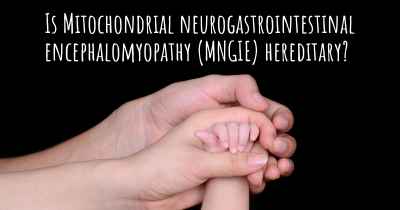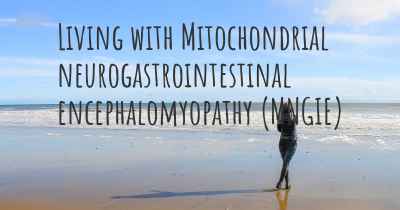How is Mitochondrial neurogastrointestinal encephalomyopathy (MNGIE) diagnosed?
See how Mitochondrial neurogastrointestinal encephalomyopathy (MNGIE) is diagnosed. Which specialists are essential to meet, what tests are needed and other useful information for the diagnosis of Mitochondrial neurogastrointestinal encephalomyopathy (MNGIE)

Mitochondrial neurogastrointestinal encephalomyopathy (MNGIE) is a rare genetic disorder that affects multiple systems in the body, including the nervous system, gastrointestinal tract, and muscles. Diagnosing MNGIE can be challenging due to its varied and nonspecific symptoms, which can overlap with other conditions. However, there are several key steps involved in the diagnostic process.
1. Clinical Evaluation: The initial step in diagnosing MNGIE involves a thorough clinical evaluation by a healthcare professional. This includes a detailed medical history, physical examination, and assessment of symptoms. The presence of specific symptoms such as gastrointestinal dysfunction, muscle weakness, peripheral neuropathy, and ophthalmoplegia (paralysis of eye muscles) may raise suspicion for MNGIE.
2. Laboratory Tests: Various laboratory tests are performed to support the diagnosis of MNGIE. These may include:
- Blood Tests: Blood samples are analyzed to measure the levels of certain enzymes, such as thymidine phosphorylase (TP) and deoxythymidine (dThd). In individuals with MNGIE, these enzyme levels are typically elevated.
- Genetic Testing: Genetic testing is crucial for confirming the diagnosis of MNGIE. It involves analyzing the TYMP gene, which is responsible for producing the thymidine phosphorylase enzyme. Mutations in this gene are associated with MNGIE.
- Other Tests: Additional tests may be conducted to assess mitochondrial function, such as measuring lactate and pyruvate levels in the blood or performing muscle biopsies.
3. Imaging Studies: Imaging techniques, such as magnetic resonance imaging (MRI) or computed tomography (CT) scans, may be used to evaluate the brain, gastrointestinal tract, and other affected organs. These imaging studies can help identify structural abnormalities or damage associated with MNGIE.
4. Electrophysiological Studies: Electrophysiological tests, such as nerve conduction studies and electromyography (EMG), may be performed to assess nerve and muscle function. These tests can help detect peripheral neuropathy and muscle abnormalities, which are common in MNGIE.
5. Biopsy: In some cases, a muscle biopsy may be recommended to examine mitochondrial function and morphology. This involves removing a small sample of muscle tissue for laboratory analysis.
It is important to note that the diagnostic process for MNGIE may vary depending on the individual and the healthcare provider's expertise. Consulting with a specialist in mitochondrial disorders, such as a neurologist or geneticist, is often necessary for an accurate diagnosis.








